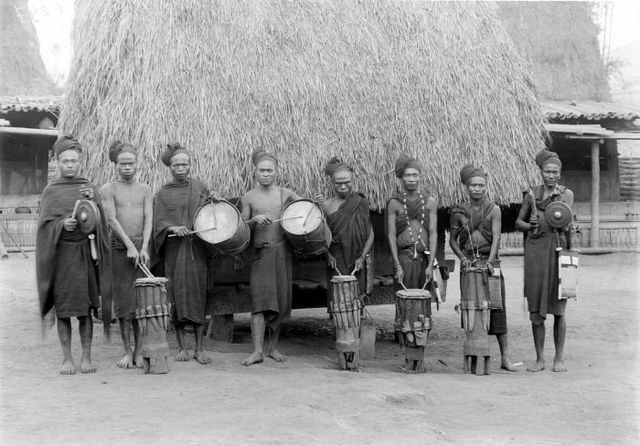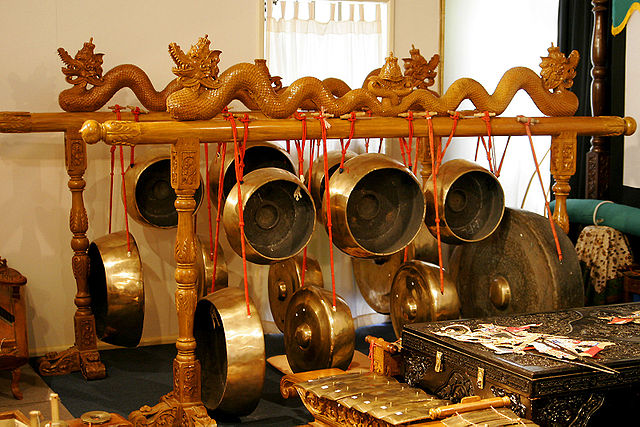Kulintang
is a modern term for an ancient instrumental form of music composed on a row of small, horizontally laid gongs that function melodically, accompanied by larger, suspended gongs and drums. As part of the larger gong-chime culture of Southeast Asia, kulintang music ensembles have been playing for many centuries in regions of the Southern Philippines, Eastern Malaysia, Eastern Indonesia, Brunei and Timor, Kulintang evolved from a simple native signaling tradition, and developed into its present form with the incorporation of knobbed gongs from Sundanese people in Java Island, Indonesia. Its importance stems from its association with the indigenous cultures that inhabited these islands prior to the influences of Hinduism, Buddhism, Islam, Christianity or the West, making kulintang the most developed tradition of Southeast Asian archaic gong-chime ensembles.
A kulintang ensemble of the Maranao people with elaborate okir carvings in the Museum of the Filipino People
A group of men from the Ngada tribe with drums and gongs (Kulintang) in Ngada, Flores, Dutch East Indies (Indonesia). in 1913
A Lumad kulintang ensemble from Bukidnon with the traditional carvings
Maranao agong
A gong is a percussion instrument originating in East Asia and Southeast Asia. A gong is a flat, circular metal disc that is typically struck with a mallet. They can be small or large in size, and tuned or can require tuning.
One of Javanese and Balinese style gong for gamelan ensemble, hanging in an ornate frame.
Two men (right) are lifting the gong depicted on the 13th-century temple reliefs at the Candi Induk, Panataran temple complex in East Java, Indonesia
A gong collection in a gamelan ensemble of instruments – Indonesian Embassy Canberra
A Gong depicted on the 15th-century temple reliefs at the Candi Sukuh in Central Java, Indonesia








